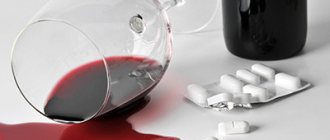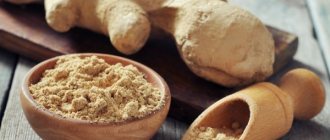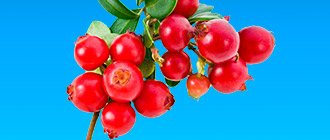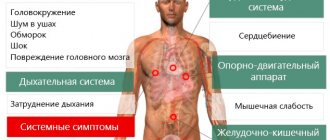Alternative medicine methods are often used in the treatment of various chronic diseases. Many herbs and plants have beneficial properties that can improve immunity, strengthen the central nervous system, and relieve symptoms of cardiovascular diseases.
This includes horseradish, known for its ability to kill harmful microorganisms.
It is also used as a means to improve the functioning of the gastrointestinal tract and even to normalize the functioning of the heart and blood vessels.
Increases or decreases blood pressure
It has long been proven that horseradish lowers blood pressure if consumed in small doses. Most often used in decoctions, tinctures, salads, and mixtures.
It contains many useful micro and macroelements, vitamins and essential oils. Thus, vitamin E has a beneficial effect on the functioning of the heart and blood vessels. Vitamin C restores elasticity to blood vessels, and magnesium is able to equalize heart rate.
These beneficial properties of horseradish prove that it is effective in treating hypertension. It is important to understand that it must be used in acceptable quantities. Most often, its inadequate presence in food can cause a hypertensive crisis.
Dishes with its addition can be an excellent prevention of hypertension and other cardiovascular diseases.
Treatment of hypertension with vegetables
There are many reasons that cause high blood pressure, but maintaining normal blood pressure is a very difficult task. Vegetables will help stabilize blood pressure.
Causes of hypertension
High blood pressure can be a symptom of hypertension, an inherited disease. Hypertension can also be observed in diseases of the kidneys, adrenal glands, blood vessels, and brain.
Fatty foods, smoking, alcohol abuse, excess weight, sedentary lifestyle - all these factors contribute to the development of hypertension. But vegetables, on the contrary, help the body lower blood pressure and stabilize it.
Well, you need to run to the garden for vegetables to counteract hypertension.
Benefits of Eating Vegetables for Hypertension
A combination of antihypertensive (pressure-lowering) drugs can lead to unexpected effects. Therefore, you can experiment with various drugs only with the permission of your doctor.
For hypertension, vegetables have a mild effect. Even excessive consumption, as well as a combination of various vegetables, will not negatively affect blood pressure.
Vegetable recipes for the treatment of hypertension
Carrots and beets are vegetables that lower blood pressure. They can be used either separately or together.
- Mix beet juice and honey in equal proportions. The resulting mixture is taken 1 tablespoon after each meal (4-5 times a day). The course of treatment is 1 month.
- 3 tablespoons of carrot seeds should be poured with 3 cups of boiling water, and then left for 12 hours in a warm place (preferably in a thermos). The resulting infusion is taken three times a day, 1 glass.
- It is necessary to carefully chop 100 g of carrot tops, pour a glass of boiling water over it and let it brew for several hours. The resulting infusion is taken a quarter glass after meals 3-4 times a day. The course of treatment is 2-3 weeks.
- Mix 1 glass each of carrot and beet juice with half a glass of cranberry juice. Add 100 ml of alcohol and 7 tbsp to the resulting juice mixture. l. honey, pour into a bottle and leave for three days in a dark place, shaking occasionally. The resulting tincture is taken half an hour before meals three times a day, 1 tbsp. l. The course of treatment is 3-4 weeks.
An infusion based on lettuce leaves lowers blood pressure.
- 1-2 tbsp. l. Fresh or dry lettuce leaves must be poured with 1 glass of boiling water, and then left for 1-2 hours. The finished infusion is taken half a glass twice a day (or 1 glass at night).
Freshly squeezed tomato juice is also recommended to drink to lower blood pressure.
- 150-200 ml of tomato juice should be taken 15 minutes before meals, twice or thrice a day. The course of treatment is 1 month.
If you have hypertension, you should regularly include potatoes baked with the skin on your menu. After all, it contains potassium in abundance - a microelement that has a beneficial effect on the functioning of the cardiovascular system.
To normalize blood pressure, hypertensive patients are recommended to take potato juice.
- Thoroughly washed and wiped potatoes, together with their peels, are grated and the juice is squeezed out of them. Take half a glass of the prepared juice three times a day, half an hour before meals. Each time you need to prepare a fresh portion of juice. The course of treatment is 2-3 weeks.
For hypertension, it is recommended to consume 1-2 cloves of garlic at night. The course of treatment is two weeks.
Vegetables contraindicated for hypertension
- Horseradish root is strictly contraindicated for hypertension, because consuming horseradish root can cause a jump in blood pressure.
- Coriander (cilantro) can lead to increased blood pressure, so do not overuse this spice.
If you experience a sudden jump in blood pressure to high levels, you need to take an antihypertensive medication. After all, infusions and vegetable juices have a mild effect, the effect of their use accumulates, and it is better to use medications as a fast-acting remedy.
Anna Zaikina, doctor
When copying site materials, keep an active link to the source.
Recipes for hypertension
It is best to make various tinctures and decoctions from the root vegetable to normalize blood pressure. But its fragrant leaves can also be beneficial. It is recommended to make compresses from them, both for hypertension and for pain in the joints and neck.
A healthy mixture for cholesterol and hypertension
Effective recipes with horseradish for hypertensive patients:
- Healing decoction. To prepare it, you need to take 300 grams of grated vegetables, add four liters of water and put on medium heat. After boiling, the broth should be boiled for 8-10 minutes, then filtered and left overnight in a cool place. It is recommended to take a medicinal decoction half a glass before meals, 2-3 times a day.
- A medicinal mixture of lemon juice, beets and horseradish.
To prepare the mixture, you need to take one glass each of freshly squeezed beet juice and horseradish juice, add three tablespoons of lemon juice. Finally, add a glass of natural honey to the composition. If it is candied, then simply hold it for a short time in a water bath. This medicinal drink should be consumed one spoon 3-4 times a day, preferably before meals.
- Tincture with horseradish in alcohol. Not suitable for hypertensive patients with advanced stages of the disease, but recommended for those who have not been diagnosed. To make a medicinal tincture, you need to take a kilogram of the root vegetable, rinse it thoroughly and cut it into circles. Sliced horseradish is poured with boiled water (1.5 liters) and cooked over low heat for about three hours. Then the tincture should cool. Add 120 ml to it. vodka, strain and pour into bottles with a lid. Store exclusively in a cool and dark place. For unstable blood pressure, take one spoon 2-3 times a day.
- Another very effective recipe against high blood pressure. Take two teaspoons of chopped root vegetables and mix with a glass of kefir or yogurt. Take one tablespoon 3-4 times a day. This recipe is also suitable for diabetics.
An effective remedy in the fight against high blood pressure
In Japan, horseradish tinctures successfully treat caries, and traditional and folk medicine uses its root as:
- A stimulant for the gastrointestinal tract;
- Diuretic for renal failure;
- An additive to vasodilator drugs necessary for arterial hypertension and atherosclerosis.
With high blood pressure, it is very important to control the elasticity of blood vessels. For this purpose, use the following recipe:
- 0.5 kg of root is peeled and cut into small pieces.
- Add 1.5 liters of hot water and heat over low heat for another 2 minutes.
- After cooling, strain the broth, add 1 glass of high-quality honey to it and mix well until completely dissolved.
- Take 1/3 cup of the drink 3 times a day after meals. Regular use will normalize blood pressure, strengthen the immune system, and improve overall well-being.
Relieves the symptoms of arterial hypertension and the following composition:
- 100 g of root is crushed using a grater.
- Grated horseradish is poured with 400 ml of good vodka (without additives).
- Leave for 24 hours and filter.
- Dilute the medicine with lemon, carrot and beet juice (1 cup each).
- After vigorous stirring, the mixture should be left in the upper part of the refrigerator.
- Take the medicine 1 tbsp. l. three times a day before meals.
- The course of treatment is a month. After a week's rest, it can be repeated if necessary.
For patients who, in addition to hypertension, also suffer from metabolic disorders and diabetes, it is useful to use grated horseradish for blood pressure with kefir or yogurt.
- For 10 parts of sour milk take 1 part of grated horseradish;
- After stirring, the mixture is left to infuse in a tightly sealed glass jar;
- It is recommended to drink 2 tsp of the finished medicine. three times a day before meals;
- Alternatively, use the following proportion: 2 tsp. chopped horseradish 1 cup low-fat kefir.
Horseradish for hypertension is consumed only freshly prepared, without eating or drinking the mixture. On thematic forums where the healing potential of horseradish is actively discussed (whether it increases or decreases blood pressure), an experienced hypertensive patient offers a recipe that helped him get rid of even the consequences of a stroke:
- Prepare grated horseradish (200 g);
- Boil it for 15 minutes in 3 liters of water;
- Leave on the windowsill until morning;
- After straining, keep in the cold;
- Take three times a day, 100 g before meals;
- Treat until the contents of the jar are finished; after a month's break, repeat the course twice more.
Traditional healers claim that not only the root vegetable, but also the leaves of the plant have the ability to reduce blood pressure. To restore normal pressure, it is recommended to prepare three fresh sheets, washed with cold water.
One of them must be secured with a medical bandage under the armpit of the left hand, and the other two must be tied to the forehead. The effect of horseradish on blood pressure can be assessed within an hour: the tonometer readings will noticeably decrease, and your health will improve. If you have persistent high blood pressure, you can tie the leaves at night or walk with them all day.
It is proposed to do a similar procedure with the root of the plant. The root vegetable, previously peeled, must be cut into 3 parts, soaked in hot water and tied in the same places: one piece with a cut to the skin is secured to the left, under the arm, and the other two - on the forehead. If you feel a painful burning sensation, you can place a thin cotton cloth on the skin to avoid irritation.
A tincture, which is used as an addition to the usual medications for hypertensive patients, will help control blood pressure. If there are no contraindications, this remedy will reduce the dose of medication.
- For the tincture, fresh, prepared root vegetables are poured with tap or well water and kept for 36 hours;
- Then the raw materials must be squeezed out and the tincture strained;
- Add lemon and carrot juices to the liquid;
- Store in a dark glass container, drink 2 tsp. 3 times a day.
The maximum effect is achieved when taking the product an hour before meals or 2-3 hours after a meal. The following remedy also lowers blood pressure:
- A glass of root vegetables, grated or in a blender, is filled with an equal volume of water;
- Leave for 48 hours, filter;
- The tincture is supplemented with honey, lemon, beet and carrot juices - 1 glass of each fresh juice;
- After thorough mixing, the drink is poured into dark glass bottles, sealed and stored in a refrigerator or cellar;
- Take one spoonful of the mixture before breakfast, lunch and dinner;
- If you miss taking the tincture, you can try again 3 hours after eating;
- The course of treatment is long, at least 2 months;
- After a 30-day break it is repeated.
Horseradish increases blood pressure in arterial hypertension or not, largely depends on the patient’s lifestyle. It is important not to forget that health problems in hypertensive patients are often caused by the abuse of meat, fatty and dairy foods.
If you follow a diet, horseradish will definitely help. The following tincture based on the root is also popular:
- Wash 700 g of root vegetables and cut into large pieces (up to 10 cm long).
- Pour the raw material with ice water (3 liters) and boil over low heat for 3 hours. When cooking, ensure that the boil is very low.
- After the time has passed, the broth is left until completely cooled in the same container.
- After straining, store in the refrigerator, drinking half a glass twice a day. The best time to treat with a decoction is 2-3 hours before dinner and in the morning, immediately after sleep.
- If the bitter taste of the medicine is unacceptable, you can add half a teaspoon of honey or another sweetener.
A tincture prepared according to this recipe not only helps control blood pressure, but also cleanses the body of waste and toxins.
Useful composition
Both the root vegetable and the leaves of horseradish contain many vitamins and other useful organic substances. The vegetable is rich in vitamins B and E. It contains ascorbic acid, amino acids, magnesium, potassium and much more.
The aromatic leaves of the plant contain dietary fiber, which has a positive effect on the gastrointestinal tract and improves appetite. The leaves and seeds contain alkaloids.
Therapeutic effect on the body
In folk medicine, horseradish can be used to treat many diseases and ailments.
It is often used for the following pathologies:
- For digestive disorders;
- For various kidney diseases;
- For flu and colds;
- To improve appetite;
- To stabilize high blood pressure;
- To improve vascular tone;
- As compresses for osteochondrosis, joint pain, rheumatism or radiculitis.
Horseradish juice is often used to prepare a solution for gargling for influenza, tonsillitis and other throat diseases.
It is also noted that its juice has the property of stopping the aging process, thanks to the flavonoids contained in the plant.
Properties and composition of horseradish
The plant reproduces by roots; it has no seeds. White flowers with a pleasant aroma, scattered crosswise, are a characteristic feature of all cruciferous plants. The plant is cultivated for no more than two years. Subsequently, the root becomes branched and woody, and, most importantly, loses its healing capabilities, so in the third year it must be replanted in a new place.
Rhizomes collected before the plant blooms have maximum strength. Store raw materials at temperatures from -1⁰ to + 1⁰, sprinkling the root crops with sand. Frozen horseradish roots do not lose their medicinal properties.
The plant contains essential oils, carbohydrates, vitamins, nitrogenous compounds, lipids. Horseradish is in the top three fruits with the maximum content of vitamin C (second only to rose hips and currants).
The high antimicrobial activity of its phytoncides is due to senfol glycosides (hydrogen acid), which are a sulfur-containing component that does not irritate the human body. During the process of grinding the root, the glycoside sinigrin, which usually does not provoke local reactions, comes into contact with the enzyme myrosinase. As a result, active allylsenfol is synthesized - an effective natural antibiotic.
Due to the abundance of beneficial qualities, horseradish tinctures are often used in folk medicine to restore health and prevent illnesses. Fresh root vegetables are rich in sodium, potassium, phosphorus, and iron. In processed form, with the addition of salt, sugar, acid regulator and other preservatives, the product loses its medicinal properties, which is why it is so important to learn how to choose, prepare and use this unique plant correctly.
Professor Elena Malysheva and her colleagues convincingly talk about the benefits of horseradish root for high blood pressure and other diseases in the program “Live Healthy,” which can be seen in this video.
Contraindications
Despite the many medicinal properties, horseradish also has contraindications:
- Firstly, it is not recommended for hypertensive patients to consume the plant in large quantities, so as not to provoke a heart attack or stroke.
- You should also be careful if you have any gastrointestinal diseases. For example, gastritis or ulcer. In this case, horseradish may be contraindicated, so you should consult your doctor.
- It is not recommended to take it orally during pregnancy and breastfeeding.
- Root vegetables in large quantities are not allowed to be added to children's dishes. At a young age, treatment with this plant is completely contraindicated.
Thus, horseradish can be an excellent preventative against hypertension or help stabilize high blood pressure.
But before you start treatment with traditional methods yourself, it is better to consult with your doctor. Author of the article Svetlana Anatolyevna Ivanova, general practitioner
Horseradish: composition and benefits
The root vegetable is used to prevent and combat many diseases. This feature is inherent due to the fact that horseradish is rich in useful substances:
- essential oils;
- carotene;
- vitamin C;
- phosphorus;
- nitrogenous substances;
- sodium;
- carbohydrates;
- potassium;
- lipids;
- iron.
This unique composition allows people to use this product not only to lower blood pressure, but also for other purposes. The plant has a beneficial effect on the body and has the following qualities:
- diuretic effect for kidney diseases;
- expectorant properties for diseases of the respiratory organs;
- diaphoretic effect;
- warming and antimicrobial effect;
- action that stimulates appetite in case of disorders of the digestive system;
- action that normalizes blood sugar levels;
- anti-inflammatory effect in infectious diseases.
Horseradish is useful for combating hypertension, atherosclerosis, diabetes, and kidney problems.











